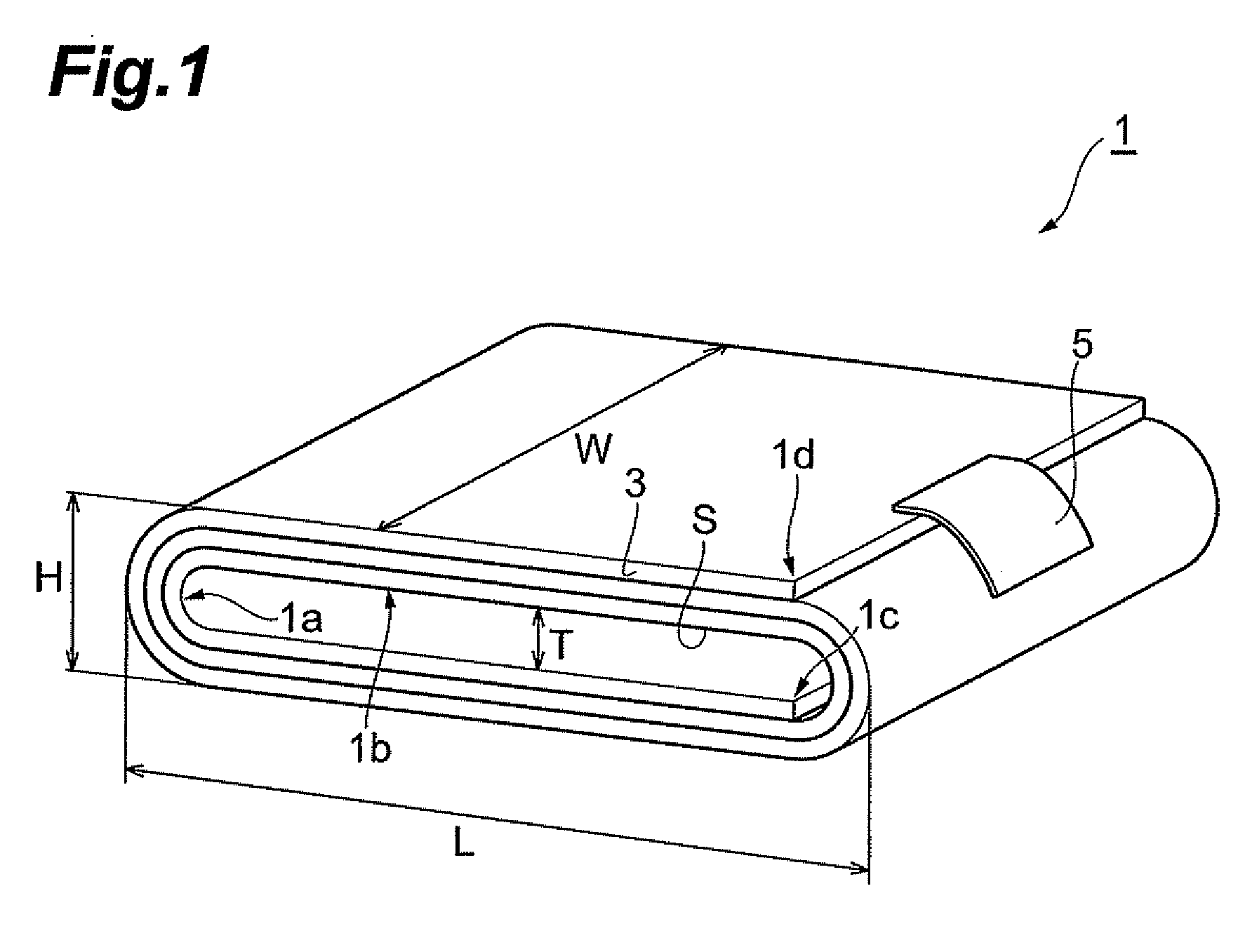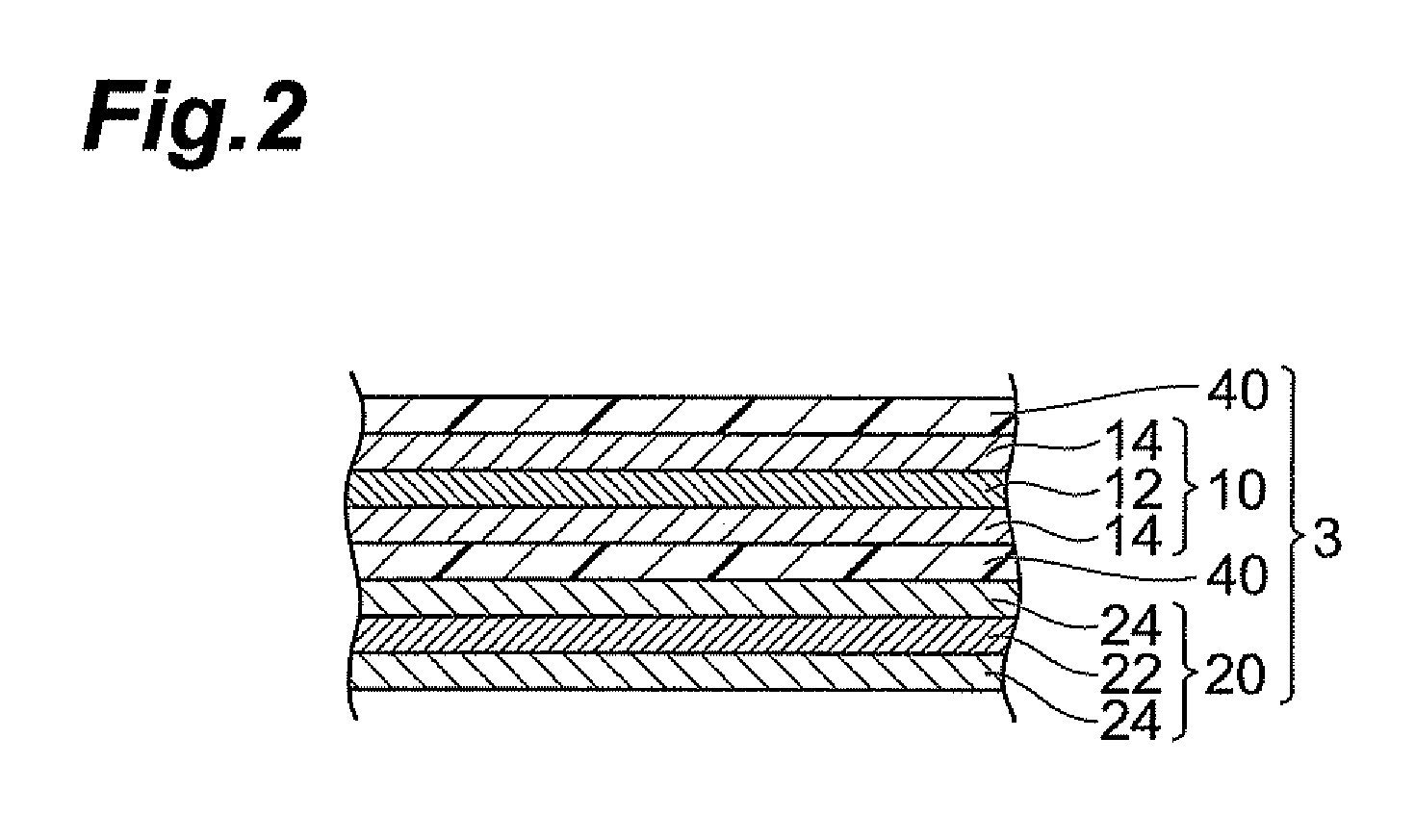Wound electrochemical device and method of manufacturing same
- Summary
- Abstract
- Description
- Claims
- Application Information
AI Technical Summary
Benefits of technology
Problems solved by technology
Method used
Image
Examples
example 1
Making of Electrodes
[0069]An active material layer coating liquid was prepared by mixing 87% by mass of granular activated carbon (product name: RP-20 manufactured by Kuraray Chemical Co., Ltd.), 3% by mass of acetylene black, and 10% by mass of polyvinylidene fluoride as a binder, and kneading the resulting mixture with N-methylpyrrolidone as a solvent. On the other hand, a lead made of an aluminum foil (having a thickness of 100 μm) was electrically connected to a band-like aluminum foil (having a thickness of 20 μm) by ultrasonic welding. Subsequently, the active material layer coating liquid was applied to both sides of the aluminum foil (having a thickness of 20 μm) by doctor blading and then dried, so as to form active material layers (each having a thickness of 8 μm). Thus, band-like electrodes (positive and negative electrodes) in which the active material layers each having a thickness of 8 μm were laminated on both sides of the current collector having a thickness of 20 μm...
PUM
 Login to View More
Login to View More Abstract
Description
Claims
Application Information
 Login to View More
Login to View More - R&D
- Intellectual Property
- Life Sciences
- Materials
- Tech Scout
- Unparalleled Data Quality
- Higher Quality Content
- 60% Fewer Hallucinations
Browse by: Latest US Patents, China's latest patents, Technical Efficacy Thesaurus, Application Domain, Technology Topic, Popular Technical Reports.
© 2025 PatSnap. All rights reserved.Legal|Privacy policy|Modern Slavery Act Transparency Statement|Sitemap|About US| Contact US: help@patsnap.com



